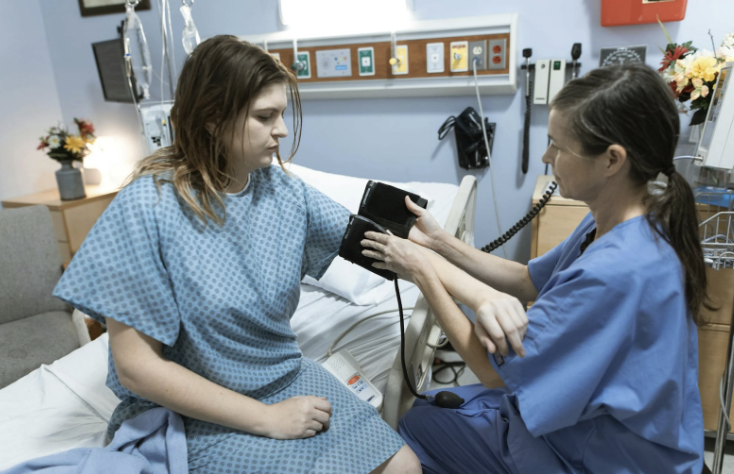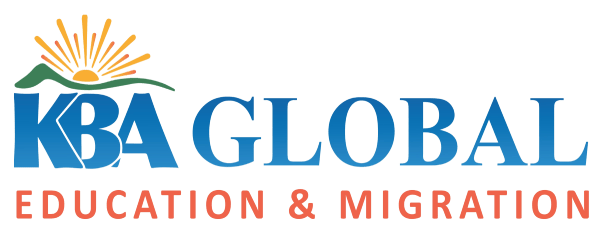For those without the means for business investments or the family connections to sponsor your migration, trading your skills and expertise for permanent residency is the way to go.
And the key to becoming an expert? Enrolling in a PR course in Australia!
Completing a PR course qualifies you for occupations that Australia anticipates will be high in demand. This boosts your chances of obtaining a work-stream visa that leads to permanent residency later on.
In this blog is our updated list of courses for PR in Australia, including the salary ranges you can expect when you work and the top universities that offer the best training.
PR List Courses in Australia 2024
Before applying for a Student visa Subclass 500, carefully consider our recommended PR pathway courses in Australia below.
Computer and Information Technology (IT)
Computer science and IT is among the best courses for PR in Australia, especially if you’re keen on solving complex problems in fields like technology, AI, software development and cybersecurity.

Why pursue Computer and IT courses?
As has been with previous years, the demand for IT experts continues to grow. The latest statistics from Gartner explain why pursuing studies in computer and IT in 2024 makes sense:
- In 2024, IT spending is expected to surpass AUD 133 billion, marking a 14.7% growth since 2022
- Software sees the biggest growth among IT sectors, while IT services remain the largest spending segment.
- Investments in cybersecurity and cloud will continue to grow, as well as in generative AI technologies.
With these insights, you will want to focus on these specific in-demand IT sectors and upskill later on to improve your job prospects.
Top Australian Institutions
For robust training in computer and IT skills, consider enrolling in one of these institutions:
- RMIT University
- The University of Queensland
- Australian National University
- The University of Melbourne
- La Trobe University
Top Job Roles and Income Range
These are some of the occupations you can pursue after graduation:
| Occupation | ANZSCO Code | Income range (per year) |
| Computer network and systems engineer | 263111 | AUD 70,000 – 100,000 |
| Developer programmer | 261312 | AUD 80,000 – 125,000 |
| Software and applications programmers nec | 261399 | AUD 88,500 – 105,000 |
| ICT business analyst | 261111 | AUD 90,000 – 145,000 |
| ICT security specialist | 262112 | AUD 90,700 – 136,378 |
| Analyst programmer | 261311 | AUD 90,899 – 135,223 |
| Systems analyst | 261112 | AUD 96,809 – 137,622 |
| Software engineer | 261313 | AUD 100,000 – 170,476 |
Engineering
Considering the range of opportunities in Australia’s diverse engineering field, engineering is considered a top PR course for international students.

Why pursue Engineering courses?
According to Engineers Australia, overseas-born engineers accounted for 70% of the growth in the engineering workforce from 2016 to 2021.
And given the ongoing demand in sectors like manufacturing, infrastructure, defense and renewable energy, Australia will likely continue to lean on skilled migrants to address urgent labour shortages.
Top Australian Institutions
Consider enrolling in one of these Australian institutions for your engineering studies:
- The University of Queensland
- The University of Melbourne
- Australian National University
- Monash University
- RMIT University
- University of Technology Sydney
Top Job Roles and Income Range
These are some of the engineering occupations you can pursue after graduation:
| Occupation | ANZSCO Code | Income range (per year) |
| Aeronautical Engineer | 233911 | AUD 93,317 – 163,436 |
| Agricultural Engineer | 233912 | AUD 60,000 – 115,000 |
| Biomedical Engineer | 233913 | AUD 83,592 – 83,592 |
| Chemical Engineer | 233111 | AUD 85,485 – 200,000 |
| Civil Engineer | 233211 | AUD 92,361 – 155,819 |
| Electrical Engineer | 233311 | AUD 100,000 – 160,000 |
| Electronics Engineer | 233411 | AUD 90,000 – 150,000 |
| Environmental Engineer | 233915 | AUD 91,200 – 146,858 |
| Geotechnical Engineer | 233212 | AUD 97,708 – 180,000 |
| Industrial Engineer | 233511 | AUD 90,000 – 158,080 |
| Materials Engineer | 233112 | AUD 92,500 – 168,250 |
| Mechanical Engineer | 233512 | AUD 92,458 – 160,000 |
| Mining Engineer | 233611 | AUD 120,000 – 190,000 |
| Petroleum Engineer | 233612 | AUD 113,645 – 153,665 |
| Naval Architect | 233916 | AUD 103,474 – 137,253 |
| Structural Engineer | 233214 | AUD 100,000 – 160,000 |
Alternatively, you may pursue technician or draftsperson roles. These positions typically require completing an associate degree or diploma, unlike the roles in the table, which generally demand a bachelor’s.
Building and Construction
Building and construction courses are considered one of the top short courses for PR in Australia. If you’re into fine details, handy with tools and good at leading a team of people, this course might be the best fit for you.
Why Pursue Building and Construction Courses?
According to Mordor Intelligence’s report, the Australian construction industry is projected to grow from 1.14 million in 2021 to 1.26 million skilled workers by 2025. This suggests that there will be increasing demand within the industry in the near future.
Moreover, with the rise of pre-fabricated construction in private and public housing, you’ll have opportunities to learn about emerging and sustainable techniques that construction firms will value.
Top Australian Institutions
Below are the top institutions offering courses for building and construction:
- Western Sydney Australia
- Victoria University
- The University of Melbourne
- Curtin University Australia
- The University of Melbourne
Top Job Roles and Income Range
After you graduate, you could work in one of the following roles:
| Occupation | ANZSCO Code | Income range (per year) |
| Bricklayer | 331111 | AUD 70,000 – 86,991 |
| Building Inspector | 312113 | AUD 90,652 – 120,283 |
| Carpenter/Joiner | 331211 | AUD 70,000 – 86,100 |
| Construction Estimator | 312114 | AUD 90,000 – 160,000 |
| Construction Project Manager | 133111 | AUD 111,978 – 197,600 |
| Wall and Floor Tiler | 333411 | AUD 64,350 – 78,000 |
| Roof Tiler | 333311 | AUD 73,075 – 84,825 |
| Glazier | 333111 | AUD 68,250 – 85,800 |
| Plasterer | 333211 333212 | AUD 66,500 – 88,920 |
Plumbing
Apart from the trade courses in building and construction, you may want to consider plumbing courses. Not only will you be able to work in construction settings, but also engage in repair and maintenance works in commercial and industrial facilities.
Why pursue Plumbing courses?
A report from Jobs and Skills Australia shows that demand for skilled workers in the plumbing sector is expected to grow over the coming years and is projected to reach 100,300 workers by 2026 (up from 92,300 in 2021).
That means there will be plenty of job opportunities awaiting you when you complete this PR eligible course.
Top Australian Institutions
These institutions are proven to offer quality plumbing courses for international students:
- RMIT University
- Federation University Australia
- Melbourne Polytechnic
- Australian Industrial Systems Institute
- Charles Darwin University
Top Job Roles and Income Range
After you graduate, you could work in one of the following roles:
| Occupation | ANZSCO Code | Income range (per year) |
| Airconditioning and Mechanical Services Plumber | 334112 | AUD 90,100 – 108,680 |
| General plumber | 334111 | AUD 64,748 – 82,875 |
| Roof plumber | 334115 | AUD 75,625 – 113,620 |
Automotive
If you’re passionate about off-road vehicles, EVs or just cars in general, think about becoming an expert in the automotive field.

Why pursue Automotive courses?
Australia’s car industry has been growing steadily in recent years. Here are some important statistics from Github that show why you should pursue this PR course:
- The Australian automotive market grew by 25% from 2011 to 2020.
- With growing environmental awareness among car users, hybrid vehicle sales rose to 93% from 2019 to 2020
- Around 3.5 million tires were processed for recycling in Australia during the year 2018-2019.
With evolving environmental and consumer needs, skilled professionals in this area of specialisation will likely remain to be in demand for the coming years.
Top Australian Institutions
Here are the best education institutions that are great at helping students gain practical automotive skills, such as vehicle maintenance and repair and tools for diagnosing modern automobiles.
- Edith Cowan University
- RMIT University
- Kangan Institute
- Baxter Institute
Top Job Roles and Income Range
These are some of the career options you can pursue:
| Occupation | ANZSCO Code | Income range (per year) |
| Automotive electrician | 321111 | AUD 64,000 – 106,000 |
| Motorcycle mechanic | 321213 | AUD 60,750 – 80,500 |
| Diesel motor mechanic | 321212 | AUD 70,000 – 90,000 |
| General motor mechanic | 321211 | AUD 70,000 – 98,800 |
Nursing
Nursing courses prepare you for healthcare jobs focused on patient care and treatment, from hospitals to community and aged care settings. With more healthcare workers needed, nursing is considered one of the top courses with PR pathway in Australia.

Why pursue Nursing courses?
According to Job and Skills Australia, registered nurses and midwives make up the largest clinical workforce in Australia. This trend will likely continue as the industry is expected to grow by 13.9% (40,400 jobs) by 2026, reaching 331,200 from 290,800 in 2021.
This projected growth suggests a shortage of nurses in the near future due to Australia’s increasing population and an aging workforce, with nurses averaging around 40 years old.
Top Australian Institutions
Below are the top nursing institutions in Australia:
- Griffith University
- The University of Technology, Sydney
- Monash University
- The University of Sydney
- University of Adelaide
- La Trobe University
Top Job Roles and Income Range
You can pursue one of these top nursing roles after graduation:
| Occupation | ANZSCO Code | Income range (per year) |
| Midwifery | 254111 | AUD 88,141 – 169,699 |
| Nurse Practitioner | 254411 | AUD 127,073 – 144,827 |
| Nurse (Surgical) | 254424 | AUD 79,591 – 119,808 |
| Nurse (Community Health) | 254414 | AUD 81,424 – 129,345 |
| Nurse (Mental Health) | 254422 | AUD 83,865 – 129,019 |
| Nurse (Child and Family Health) | 254413 | AUD 78,964 – 114,007 |
| Nurse (Medical Practice) | 254421 | AUD 74,325 – 102,664 |
| Nurse (Paediatrics) | 254425 | AUD 80,680 – 129,306 |
| Nurse (Critical Care and Emergency) | 254415 | AUD 80,963 – 123,906 |
| Registered Nurse (Aged Care) | 254412 | AUD 79,188 – 130,845 |
| Nurse (Disability and Rehabilitation) | 254417 | AUD 60,843 – 78,996 |
Education and Teaching
As Australia’s quality of education improves, the need for quality teachers grows as well. Choosing PR eligible courses in education and training allows you to follow your passion for teaching, whether it’s in schools, universities, VET centres or even homeschooling.

Why pursue Education and Teaching courses?
You have a good chance of landing a job in education, as it’s expected to grow from 1.12 million jobs in 2021 to 1.27 million jobs by 2026 — that’s 149,600 new jobs (Jobs and Skills Australia).
While most workers hold university qualifications, a significant 20% hold VET qualifications, showcasing the diversity of educational backgrounds in the field.
Top Australian Institutions
Some of the best universities to study education and teaching are as follows:
- Monash University
- Deakin University
- The University of Queensland
- The University of Sydney
- University of Canberra
- University of Wollongong
Top Job Roles and Income Range
These are the popular education roles you can pursue when you complete your course.
| Occupation | ANZSCO Code | Income range (per year) |
| Primary School Teacher | 241213 | AUD 86,706 – 118,560 |
| Secondary School Teacher | 241411 | AUD 83,448 – 108,038 |
| Special Needs Teacher | 241511 | AUD 80,000 – 96,000 |
| University Lecturer | 242111 | AUD 92,071 – 123,695 |
| Child Carer Worker | 421111 | AUD 54,969 – 79,629 |
| Early Childhood (Pre-primary School) Teacher | 241111 | AUD 75,556 – 95,983 |
| Vocational Education Teacher | 242211 | AUD 87,377 – 102,000 |
| Special Education Teacher nec | 241599 | AUD 81,338 – 118,647 |
Social Work
Social assistance and welfare courses help you gain the skills to support Australian seniors needing care, persons with disabilities, families requiring childcare and those in vulnerable situations.

Why pursue Social Work courses?
You can expect a big rise in social work jobs, from 40,000 in 2021 to 49,300 by 2026, based on report from Jobs and Skills Australia.
Furthermore, as people become more aware of social issues and mental health, the need for social workers grows as well, making social work courses popular among students
Top Australian Institutions
The best institutions to study social work courses include:
- Kangan Institute
- Monash University
- The University of South Australia
- Federation University Australia
Top Job Roles and Income Range
Some of the roles you can take on after finishing your social work PR course are:
| Occupation | ANZSCO Code | Income range (per year) |
| Social Worker | 272511 | AUD 82,946 – 116,099 |
| Community Worker | 411711 | AUD 60,450 – 95,527 |
| Welfare Worker | 272613 | AUD 70,863 – 92,210 |
| Welfare Centre Manager | 134214 | ~ AUD 80,000 |
| Family Support Worker | 411713 | AUD 68,612 – 98,800 |
| Parole or Probation Officer | 411714 | AUD 68,950 – 103,605 |
Steps to Apply for PR in Australia for International Students
Here’s an overview of what your student to PR journey will look like:
1. Enroll in a PR course.
All PR eligible courses in Australia are CRICOS-registered. Choose one that’s offered by your preferred institution.
If the application is successful, you will receive a Letter of Offer from the institution. You must accept this offer and pay the enrolment fee to receive a Confirmation of Enrolment – you will need this during your student visa application.
2. Apply for a Student visa (Subclass 500).
You must apply for a student visa via Immiaccount. This online system will guide you through the documents you must upload, such as your passport, English proficiency, CoE and so on.
Once granted, you can travel to Australia for your studies.
3. Apply for Temporary Graduate visa (Subclass 485)
The temporary graduate visa 485 visa allows you to seek employment and gain valuable work experience in Australia right after graduation for up to 4 years.
You can only apply for a Temporary Graduate visa once you finish your studies and have met the Australian Study Requirements:
- You completed all the requirements of your CRICOS course
- You completed your course(s) in at least two academic years (92 weeks)
- You completed your course in not less than 16 calendar months
4. Apply for a working visa.
For points-tested visas like the 491, 189 or 190 visas, you must first calculate your PR points and achieve at least the minimum points for skilled migration.
Look into the latest invitation rounds to see how many points you need to achieve for your occupation.
If you have an employer willing to sponsor you, explore visas like TSS, 494, or 186 instead.
Tips for Applying for a PR Course in Australia
As you pursue your PR course in Australia, you’re probably already familiar with the challenges of being a student. Here are our top 3 tips to make your PR journey worth it.
Tip # 1: Choose a course you’re genuinely interested in.
As many would agree, when you’re passionate about what you’re learning, it won’t feel like work. This approach is sustainable and ensures you enjoy your journey from student to PR.
Tip # 2: Choose a course in the MLTSSL.
Australia’s Medium and Long-Term Strategic Skills List reflects all occupations projected to be in shortage for the long term. When you complete courses aligned with these occupations, you’ll have a greater chance of getting a PR visa.
Tip # 3: Consult professional migration advice.
A reliable registered migration agency can help you optimise your PR journey with its extensive industry experience and up-to-date knowledge of migration laws. They’ll provide honest advice on choosing the right course for your skills and suggest steps to increase your chances of getting a PR.
Should I study in a regional area?
The best part about studying in one of Australia’s regional areas is that you can earn additional PR points – a step closer to getting a PR visa. Other benefits of regional study include:
- Being able to extend your Temporary Graduate visa for up to 2 years (for graduates with a Bachelor’s degree or higher)
- Priority processing of regional visas (e.g. 482 visa, 494 visa, etc.)
- Lower cost of living compared to studying in big cities
Why study in Australia?
Australia’s education system is recognised worldwide. So, when you complete your qualification, you’ll have a good chance at pursuing further studies or finding work globally.
With over 600,000 international students, 56% of whom are in higher education (Erudera), you’ll meet people from diverse backgrounds who you can learn from and who’ll learn from you as well, adding to a wholesome learning experience.
Lastly, studying in Australia has been a proven pathway to PR. You’ll have the chance to live, work and study as much as you want, access Australia’s health scheme, enjoy work-life balance and overall, improve your quality of life.
Make your visa journey simpler with professional guidance
Don’t stress over the details. At KBA Global, we’re happy to give you personal advice and sort out the requirements and paperwork for you.
With over 10 years of service, we understand how the migration industry works. Expect that we’ll be practical and upfront with you, both of which are keys to improving your chances of migration success.
Book a free call and share your circumstances with our registered migration agents today!
FAQ: Australia PR Courses
What is the average tuition fee in Australia?
Tuition fees for international students can vary depending on the level of qualification, your course and the educational institution. Below is the estimated tuition fee range for each level of qualification.
- VET, Diploma, and Foundational Courses: AUD 5,700–24,000 per year
- Bachelor: AUD 20,000–AUD 45,000 per year
- Master: AUD 22,000 – AUD 50,000 per year
- PhD: AUD 20,000–AUD 42,000 per year
Aside from tuition, what other costs should I consider?
Other costs you should consider on top of tuition fees include the following:
- Accommodation. Expect rent take up a huge portion of your budget. Consider shared accommodations or homestays for better value.
- Living expenses. Budget for groceries, transportation, travel, entertainment, and other daily expenses.
- Health insurance. Overseas Student Health Cover (OSHC) is mandatory for international students and helps cover medical expenses.
- Textbooks and study materials. Plan for the cost of textbooks, course materials, and equipment required for your studies.
Read our guide on the cost of living in Australia for further information.
Can I work part-time while studying?
Yes, you’re allowed to work for up to 48 hours per fortnight during the academic year.
You may work unlimited hours during scheduled breaks.
What can I do while studying to improve my chances of getting permanent residency?
To improve your chances of getting PR later on, you can do these things while studying:
- Study in regional Australia (you get extra PR points for this)
- Get relevant part-time work experience
- Strictly follow the conditions attached to your visa
Do a quick VEVO check to see other visa conditions you must follow.

